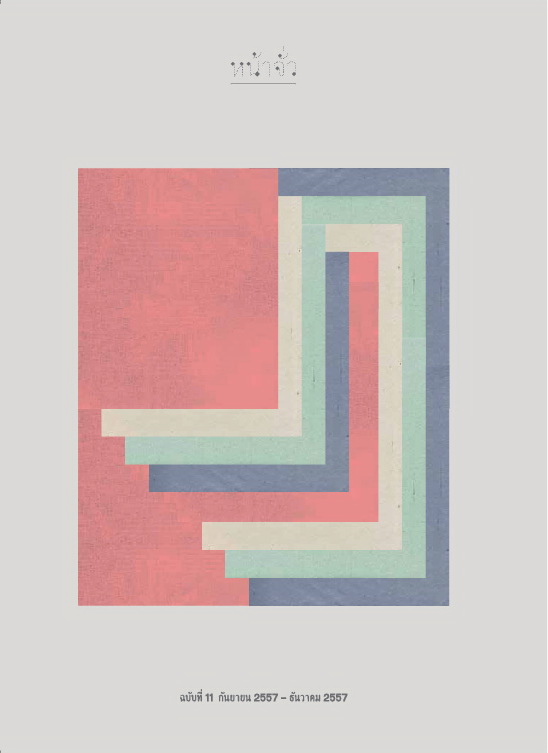ศูนย์กลางพระนครในสมัยต้นรัตนโกสินทร์/ The City Centre of the Early Bangkok
Main Article Content
Abstract
บทคัดย่อ
ศูนย์กลางเมืองคือพื้นที่ที่สำคัญที่สุดแห่งหนึ่งของพื้นที่ชุมชนเมือง การก่อรูปของศูนย์กลางเมืองเป็นตัวจักรที่ขับเคลื่อนวิวัฒนาการทั้งทางกายภาพและทางสังคมของชุมชนเมือง การศึกษากระบวนการก่อรูปของศูนย์กลางเมืองจึงเสนอคำอธิบายว่าด้วยชุมชนในหลายแง่มุม บทความนี้มุ่งศึกษากระบวนการก่อรูปของศูนย์กลางเมือง โดยผ่านกรณีศึกษา “ศูนย์กลางพระนครสมัยต้นรัตน-โกสินทร์ (รัชกาลที่ 1-3)” คำถามหลักของบทความนี้ได้แก่ 1) ศูนย์กลางพระนครในสมัยต้นรัตนโกสินทร์มีลักษณะเช่นใดและก่อร่างขึ้นอย่างไร และ 2) การก่อร่างของศูนย์กลางพระนครเกิดขึ้นด้วยปัจจัยใด ผลการวิจัยสรุปว่าพระนครสมัยต้นรัตนโกสินทร์ ประกอบด้วยศูนย์กลาง 2 ศูนย์ ศูนย์กลางแรกอันได้แก่พระบรมมหาราชวังเป็นศูนย์รวมของอำนาจทางการเมือง เป็นที่สถิตของความศักดิ์สิทธิ์สูงสุดของราชอาณาจักร และเป็นแหล่งชุมนุมของชนชั้นสูง ขณะที่ศูนย์กลางแห่งที่สองอันได้แก่ย่านวัดสุทัศน์เป็นศูนย์รวมศาสนสถานสำคัญ เป็นแหล่งชุมนุมชนและย่านการค้าของสามัญชนในพระนคร การก่อรูปของศูนย์กลางพระนครทั้งสองเกี่ยวโยงกับ 2 ปัจจัยซึ่งสัมพันธ์กันคือ 1) ปัจจัยทางความเชื่อ และ 2) ปัจจัยทางการเมือง ผู้ปกครองสมัยต้นรัตนโกสินทร์สร้างศูนย์กลางพระนครทั้งสองโดยสื่อสัญลักษณ์ทางความเชื่อที่เกี่ยวโยงกับสิทธิธรรมทางการปกครองไว้เพื่อเสริมสร้างความมั่นคงให้กับรัฐและระบอบการปกครองของตน
Abstract
The city centre is one of the most important areas in a city. In most cases, its formation drives the evolution of the urban form both in physical and social terms. As such, the study of the city centre formation offers an insight to gain a better understanding of many aspects of urban setting. The paper examines the formation of a city centre through the case of the early Bangkok which is confined to the period between the years of King Rama I and those of King Rama III. The questions that guide the paper content are 1) what were the key features of the city centre of the early Bangkok? ; and 2) how and why were they formed? The paper shows that the early Bangkok had two main centres. The first, the Grand Palace, was the focal point of the kingdom’s political power, the seat of the kingdom’s supreme holiness and the gathering place of the nobles. The second, the Suthat district, located many important religious establishments and communities and was a commercial hub of the commoners. The formation of both centres was associated with two key related factors : 1) the religious beliefs ; and 2) the political requirements. In essence, the physical presence of the centres was set up to symbolise the legitimacy of the then political regime.

